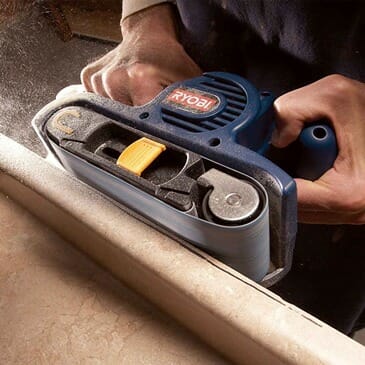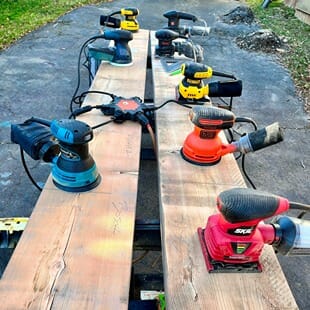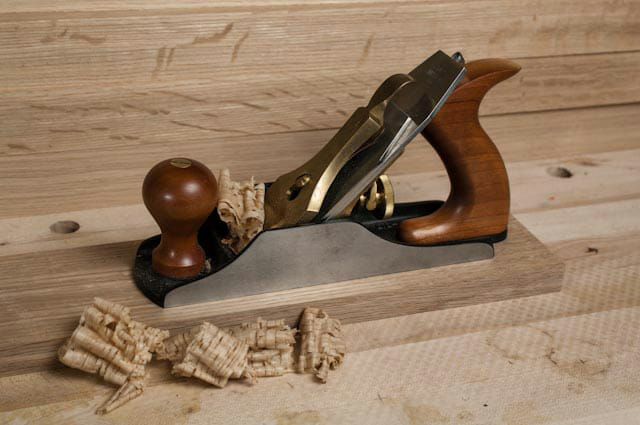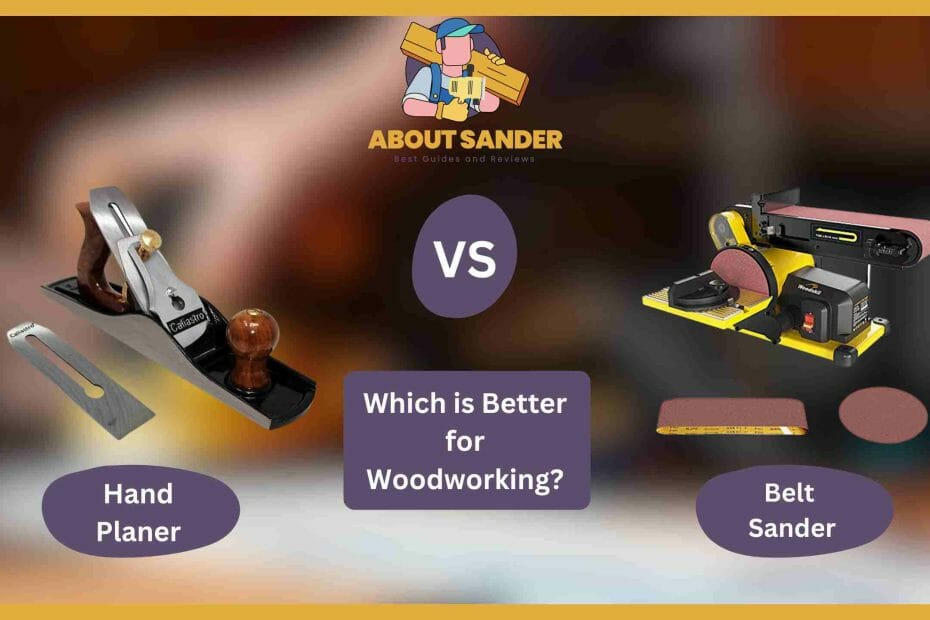Regarding woodworking, two of the most commonly used tools are Hand Planer vs. Belt Sander. Both tools are essential in creating smooth and finely crafted wooden surfaces.
However, each has unique advantages and disadvantages, making them more suited to specific tasks. This article will explore the differences between hand planers and belt sanders and how to choose the right tool for your woodworking project.
Overview of Hand Planer vs. Belt Sander:

Regarding woodworking, hand planers, and belt sanders are two of the most commonly used tools. Each has unique advantages and disadvantages, making them more suitable for specific tasks. Here’s an overview of hand planers and belt sanders.
Hand Planer: Advantages and Disadvantages:
A hand planer is a versatile woodworking tool that can create smooth and even surfaces on wood. Here are some advantages and disadvantages of using a hand planer:
Advantages:
Here are some advantages of hand planer.

Precision Work:
One of the main advantages of using a hand planer is that it allows for precision woodworking. Hand planers are perfect for smoothing out small details, and their delicate nature ensures you have more control over the final product.
Narrow Surfaces:
Hand planers can be used on narrower surfaces that are difficult to reach using other tools. Suppose you need to work on a small piece of wood or trim off a particular section of a larger surface. In that case, a hand planner is perfect for the job.
No Dust:
Hand planers only create a little dust, unlike a belt sander, which can produce a lot of dust. This makes working with them a cleaner experience, having a lesser chance of valuable tools and other items inside the workshop getting damaged or dirty.
Disadvantages:
Here are some disadvantages.

Requires Skill and Practice:
Using a hand planer requires a certain amount of skill and practice to master. If you aren’t careful, Removing too much material or gouging the surface you are working on is possible.
Not Ideal for Larger Surfaces:
While hand planers are perfect for narrow surfaces and detailed work, they aren’t the best tool to use when working on larger surfaces as they can take a lot of time and effort to get the same results achieved through a powered tool.
Limited Material Removal:
Hand planers can only remove small amounts of material at a time. This means it can be slower than power tools like electric sanders or grinders for removing large amounts of material.
In conclusion, a hand planer is a versatile tool that offers precision woodworking and can create smooth and even surfaces. However, it requires skill and practice, and it could be better for large surfaces or for quickly removing large amounts of material.
Belt Sander: Advantages and Disadvantages:
A belt sander is a powerful tool with an abrasive belt that rotates around two drums. It can sand and smooth out large surfaces quickly and efficiently. This section will examine the advantages and disadvantages of using a belt sander.
Advantages:
Here we should know about some benefits of a belt sander.#/im

Speed and Efficiency:
When sanding large surfaces, few tools can match the speed and efficiency of a belt sander. It’s designed to cover a larger area in less time than other tools like hand planers or manual sanding.
Material Removal:
A belt sander can remove a significant amount of material more quickly than other tools, making it ideal for rough sanding or leveling surfaces with a more even distribution of layers.
Consistent Finish:
A belt sander can produce a more consistent finish on large surfaces than hand sanding. It’s especially useful when working with uneven pieces of wood or reclaiming old surfaces, where uniformity of surface finish is important.
Disadvantages:
Here are some limitations of the belt sander.

Expensive:
Belt sanders are one of the more expensive power tools on the market. It can be an issue for the DIY consumer, for whom cost is important.
Dust Production:
A belt sander can produce a large amount of dust when working, harming the user’s health or causing damage to surrounding surfaces. Therefore it is advised to use proper PPE to prevent breathing in the dust and to clean the surrounding place to avoid dust accumulation.
Uneven Surface:
When sanding a surface, a belt sander can leave behind uneven areas, especially at corners and edges where the belt doesn’t reach easily.
In conclusion, belt sanders are a powerful tool with several advantages, including speed, efficiency, material removal, and a consistent finish. However, it can be expensive, produce dust, and leave behind uneven surfaces if used improperly.
You can also check out our other related article Types of Sanders for DIY and Professional Use:
Choosing the Right Tool:
When choosing the right tool for your woodworking project, it’s essential to consider several factors. Here are some things to remember when deciding between a hand planer and a belt sander.

Type of Job:
The first thing to consider is what job you need to complete. A hand planer is better if you need to do detailed woodwork on narrow surfaces. But a belt sander might be the better option if you need to sand large surfaces or remove more material.
Precision and Control:
A hand planer is the right tool choice if you require more precision and control over the woodwork. However, a belt sander is best suited for jobs where speed and efficiency are the paramount requirements and are not much concerned about finesse.
Amount of Material to Remove:
The quantity of material to be removed is an essential factor. Suppose you need to sand or remove a large amount of material quickly. In that case, a belt sander is more suitable than a hand planer, which is best for finishing work and precision woodwork, i.e., sanding small amounts of material and smoothing wood surfaces.
Size of the Surface to Sand:
If you have a large surface to sand, a belt sander is the better choice as it can cover larger areas in less time. However, a hand planer might be a better choice if the surface is smaller or irregular.
How to use an electric planer on a tabletop?
Here are the general steps to use an electric planer on a tabletop:
1. Prepare the Workspace:
Clear the workspace and clamp the tabletop securely onto the workbench or table. Ensure that the tabletop is stable and won’t shift during planning, as it will cause a deterioration of the quality of work.
2. Safety Precautions:
Wear appropriate personal protective equipment that includes safety glasses, ear protection, and a dust mask, and ensure that the electricity supply is proper.
3. Set the Blade Depth:
Set the depth of the blade before starting the planning work. The depth of the cut should be shallow enough to avoid over-cutting the surface.
4. Begin Planning:
Position the electric planer with its blades facing the cut line. Begin the planer at one end of the tabletop and continue in a straight line until the end while avoiding overlapping the cutting. To get the best results, move the planer rapidly and evenly.
5. Repeat the Process:
After finishing the first pass, adjust the depth slightly deeper and repeat the process until the tabletop is smooth and evenly without any rough spots or areas to ensure consistent thickness.
6. Inspect Your Work:
Visually check the gaps or separation by touching the processed tabletop.
7. Sanding:
Once you’ve finished with the planning part, smooth the surface with sandpaper, preferably by hand or machine, depending on the size of the surface, before final finishing work.
Using an electric planer on a tabletop is a time-saving technique to bring new life to old furniture. Proper safety precautions and the right techniques will ensure you achieve the desired result.
Belt Sander vs. Palm Sander: A Comparison
Regarding sanding wood, two tools often come to mind: belt and palm sanders. While both tools effectively achieve a smooth finish on wood surfaces, they work differently. Here’s a comparison of belt sanders and palm sanders:

Size and Shape
A belt sander is typically more substantial than a palm sander. It is designed to be used with two hands and can sometimes be bulky, making it tricky to use in small spaces.
As the name suggests, a palm sander is smaller and more compact than a belt sander. It’s designed to fit comfortably in the palm of your hand, making it easier to use in tight spaces.
Surface Area Coverage
A belt sander’s primary advantage is its size and power, which allows it to cover vast surface areas much quicker than a palm sander, but the sanding is rougher in the finish.
A palm sander is used for sanding on a more intricate area because of its size; it could be better for large projects requiring heavy sanding.
Material Removal
Belt sanders are designed to remove significant material in one pass, making them ideal for rough or initial sanding and leveling. Palm sanders are best used to remove small amounts of material or fine-tune surfaces.
Finishing
A belt sander is great for initial/rough sanding, but the resulting finish on a wood surface might need more finesse achieved by other sanding and finishing techniques.
Palm sanders are perfect for finishing work, where a smooth and polished surface is important due to their finer grit sandpaper and the ability to work on edgy and intricate work.
Dust Disposal:
Belt Sanders produces a large amount of dust that needs to be maintained through a proper exhaust system and dust collection. It produces a significant amount of dust, often impairing visibility.
Palm sanders produce less dust and offer an onboard dust collection system attached to a dust bag or container connected to a vacuum cleaner.
What is a planer tool?
A planer is an essential woodworking tool that clears rough lumber surfaces. It creates a flat, smooth surface using a rotating cutter head with razor-sharp blades that shave off layers of wood to get the desired thickness. Here are some subheadings to explain what a planer tool is in detail:
A planer is a machine or woodworking tool that removes uneven or rough surfaces from a wooden board by cutting thin layers of wood.

Types of Planer Tools:
Different types of planers are available with various specifications and capabilities depending on the job requirements.
- Hand Planer: A small hand-held tool ideal for precision work, shaping, and smoothing irregular shapes of wood surfaces.
- Electric Planer: A power tool ideal for larger projects requiring more material removal and faster speed. It is a versatile tool with adjustable depth control that can quickly cut through most wood types.
Parts of a Planer Tool:
A planer tool consists of various parts, such as:
- Infeed roller: Guides the wood through the machine for an even process
- Cutterhead: Rotating part with blades that remove wood from the surface
- Outfeed roller: Supports the wood after it goes through the cutting process.
- Table/bed: The flat surface where wood is placed for the cutting
Advantages of a Planer Tool:
- It is essential for achieving a smooth finish when working with wood.
- An efficient way of removing any rough texture on wood with minimal effort and time.
- Produces a uniform thickness on wood surfaces removing irregularities.
- It also helps remove any bends, twists, or deformities from the wood, resulting in a flat surface.
Disadvantages of a Planer Tool:
- They can be expensive, especially for commercial use.
- Planing wood creates wood dust, necessitating proper ventilation systems to prevent respiratory problems.
- Depending on the material used, it can result in a significant amount of wood waste.
In conclusion, planer tools are essential for creating a smooth and level surface on wood, making them a must-have tool for any woodworking project. Whether it’s an electric or handheld version, planers come with several advantages and disadvantages that should be considered before deciding what tool to use.
FAQs:
Here are some important FAQs:
What is the primary difference between a hand planer and a belt sander?
The primary difference between a hand planer and a belt sander is the method of operation. A hand planer is a hand-held tool that removes small amounts of wood to achieve smooth surfaces, while a belt sander is a powerful tool that sands surfaces to smooth them out, typically used for large projects that require quick work.
Which tool is best suited for precision woodworking?
A hand planer is best suited for precision woodworking. The tool allows for precision and control when smoothing out wooden surfaces, and skilled artisans can use it to create intricate designs and shapes that cannot be achieved with other tools.
Which tool is better for removing a large amount of material quickly?
A belt sander is better for removing a significant amount of material quickly. The tool is designed to cover large areas in less time than other tools like hand planers or manual sanding.
Which tool is more expensive, a hand planer or a belt sander?
Belt sanders are generally more expensive than hand planers, although the price varies depending on the model and brand.
Can a belt sander be used for precision woodworking?
While a belt sander is generally not used for precision woodworking, it can achieve a smooth finish and level an entire surface quickly but should not be used for intricate woodworking.
Conclusion:
In conclusion, Hand Planer and Belt Sanders have advantages and disadvantages. A hand planer is better suited for precision woodworking tasks, intricate designs, or shaping and can create an incredibly smooth surface without leaving any noticeable sandpaper grit marks. However, using a hand planer requires skill, and there are better tools for sanding or smoothing large areas.

Why Trust About Sanders?
When it comes to the world of sanding and sanders, you need a trusted source of information and guidance to ensure you achieve those perfect finishes. That's where I come in – I'm Martin, a dedicated sanding enthusiast with a relentless passion for attaining flawless surfaces. With years of hands-on experience in the sanding industry, I've honed my skills and expertise to provide you with the most reliable and accurate insights. What sets me apart is my commitment to excellence. I meticulously handpick each sander after rigorous testing, ensuring that only the best tools make it to your hands. My goal is to empower you with the knowledge and recommendations you need to tackle any sanding task confidently. When you trust About Sanders, you're putting your faith in a seasoned expert who shares your passion for perfection and strives to deliver top-notch information and reviews for every sanding challenge.
